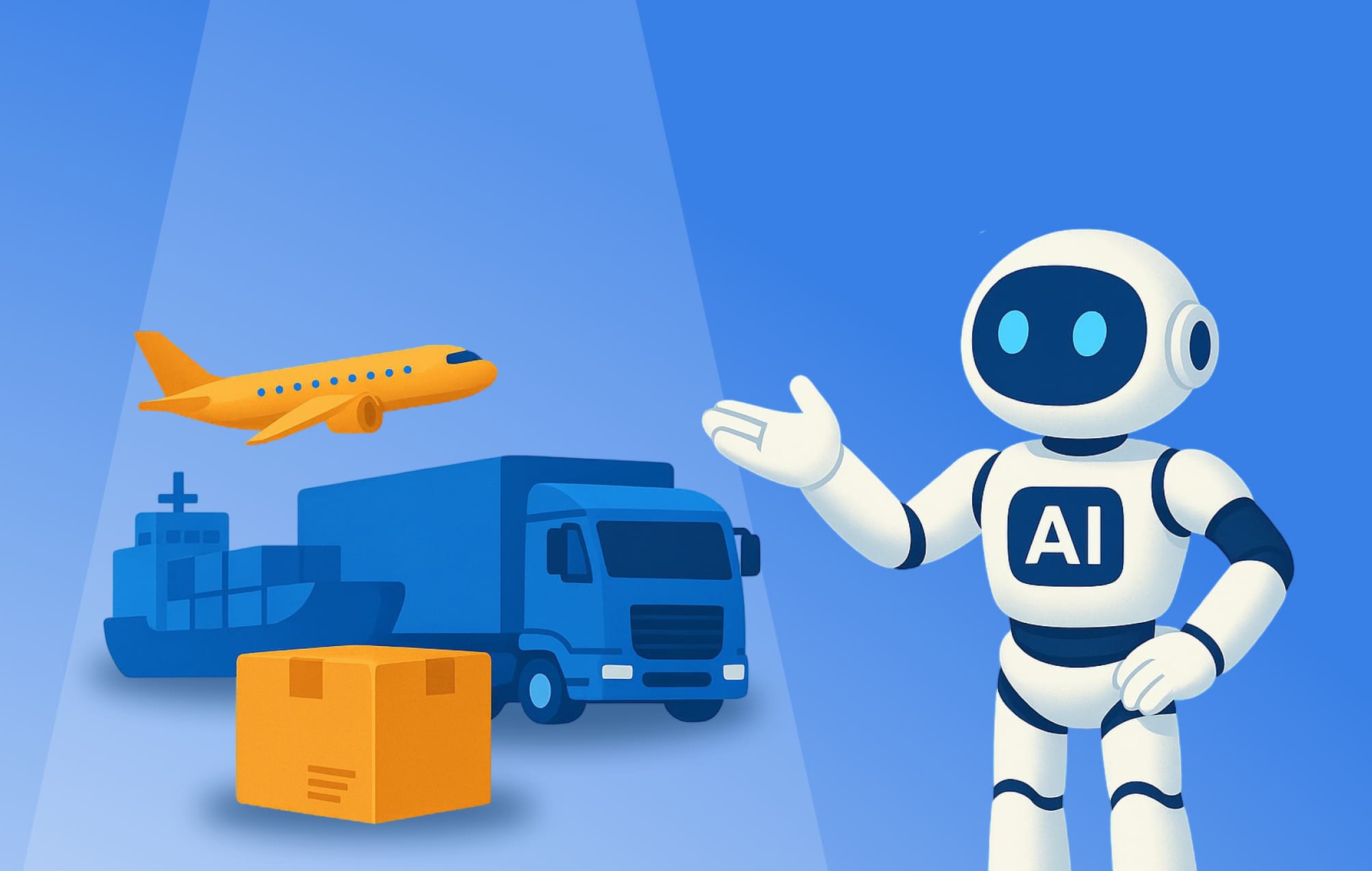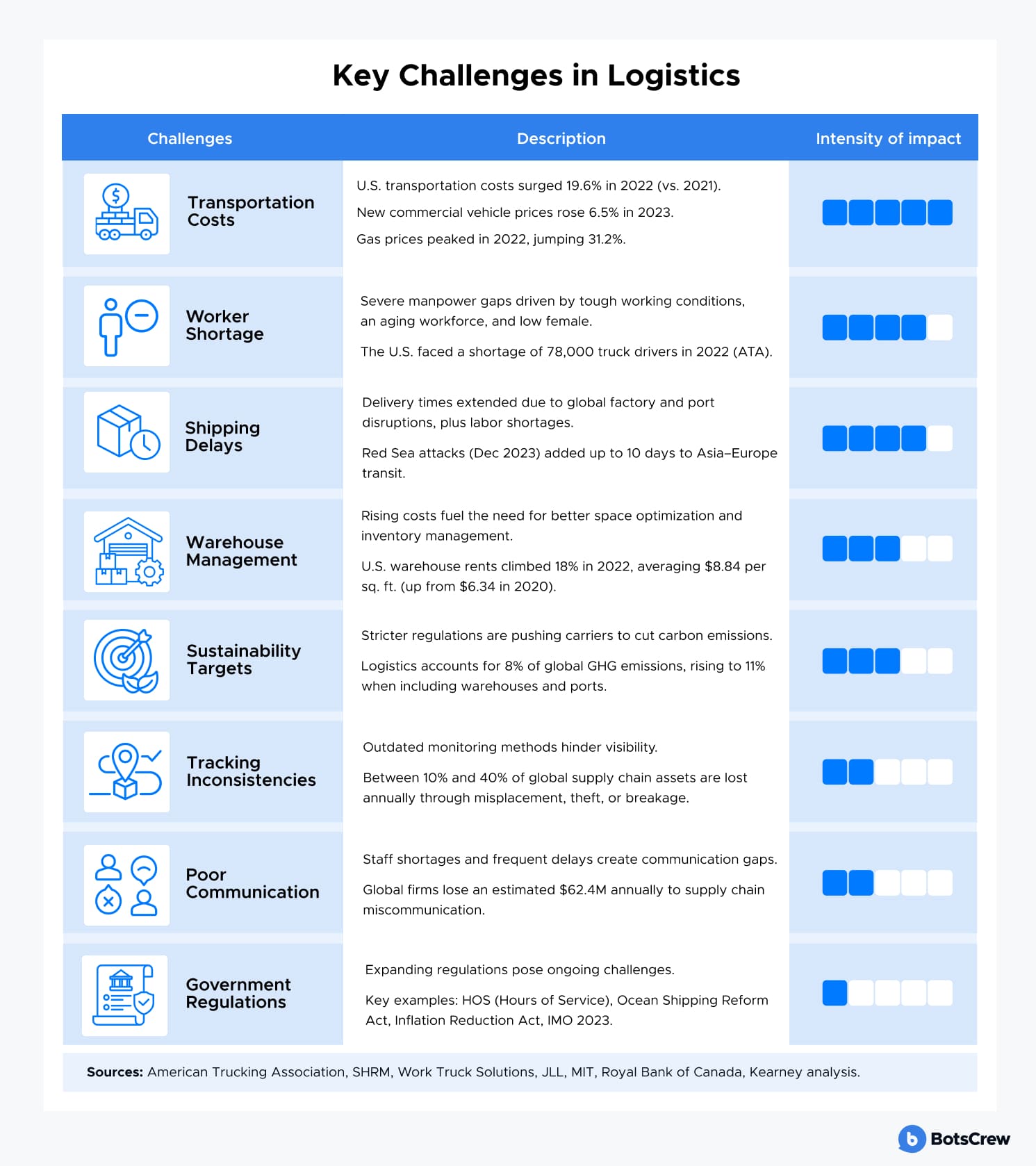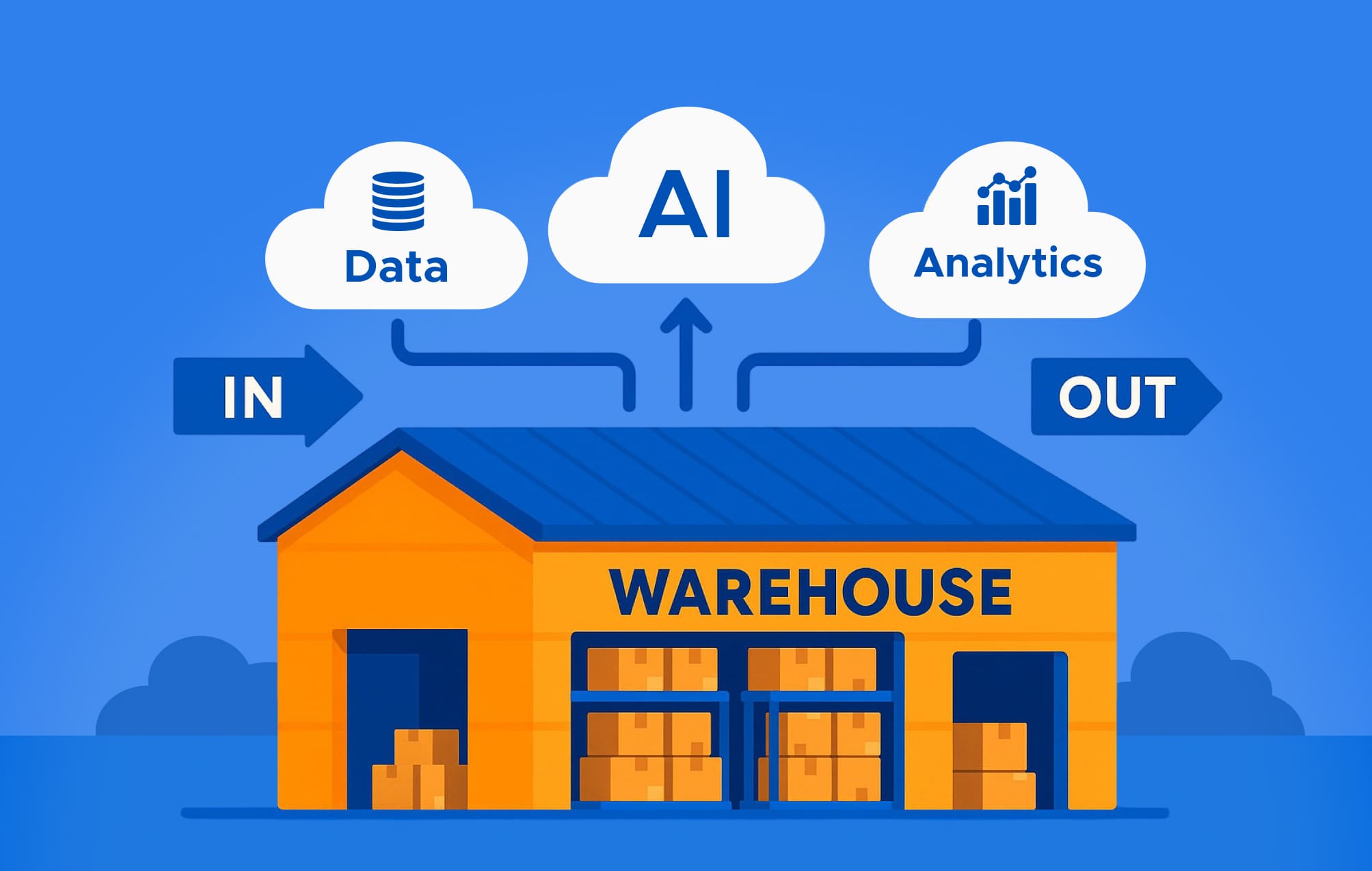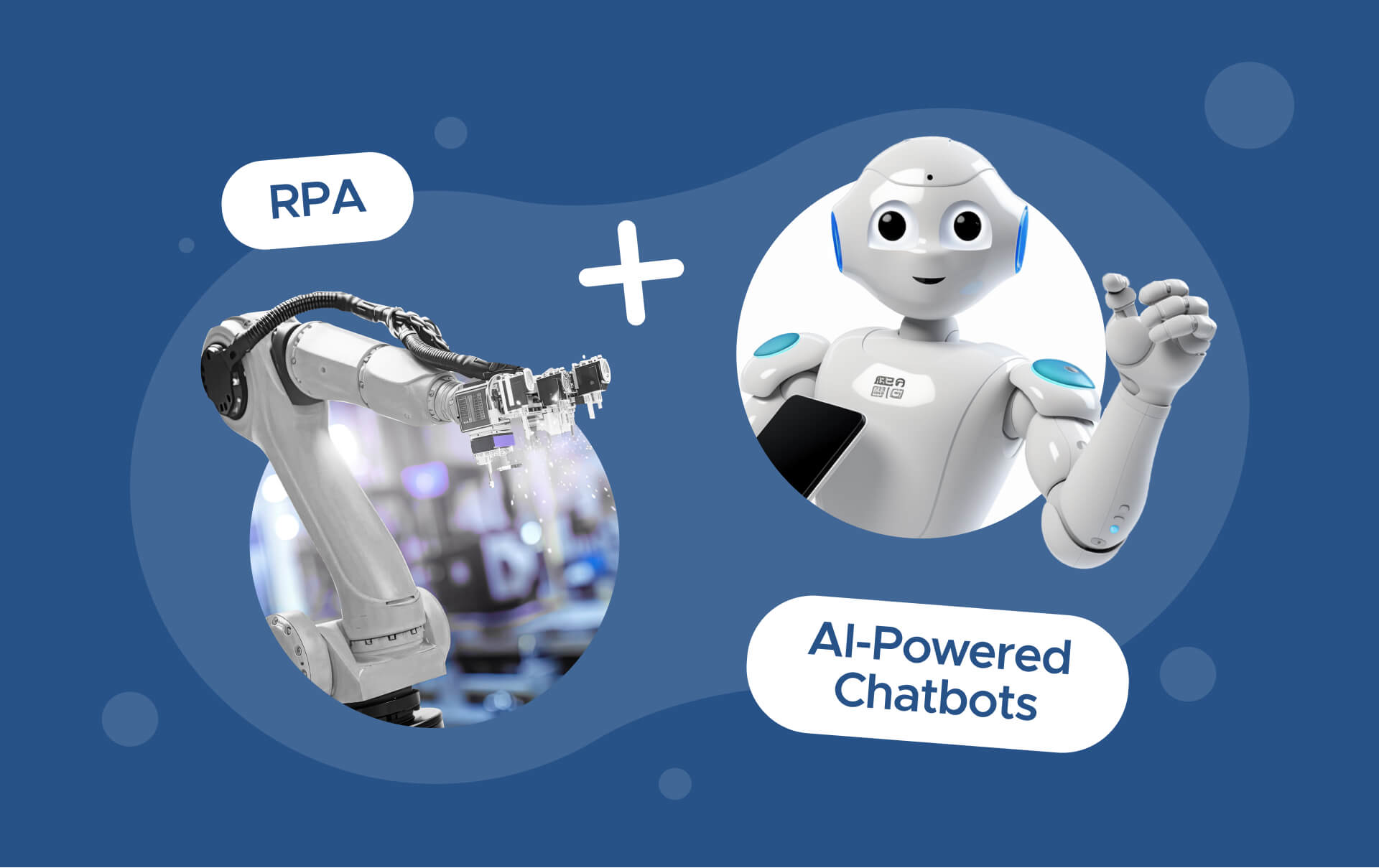AI in Transportation & Logistics: Is It the Right Fit for Your Company?
AI in transportation is more than just a fancy buzzword. From preventing crashes to predicting breakdowns, AI is reshaping transportation and logistics. Fleet operators cut fuel costs, boost uptime, and streamline networks. Automation is already typical, and fully autonomous vehicles may arrive within a decade. Big players are cashing in — Tesla monitors driver fatigue, BMW runs 400+ AI apps, and Hitachi saves fleets millions with predictive systems.

Nearly 65% of logistics leaders see AI as a top priority for the coming years. Even back in 2018, 1 in 4 public transport managers was already using it for real-time operations and customer analytics. The benefits are clear: less manual work, smarter decisions, cost savings, dynamic pricing, and stronger customer experiences.
Driver-assistance and hazard-detection systems prevent accidents, while predictive analytics spot risks in real time. Fleet operators cut fuel use, avoid costly breakdowns with predictive maintenance, and optimize network-wide operations. Most vehicles already rely on basic automation — and fully autonomous cars could be on the road within a decade.
Industry leaders like Amazon, FedEx, Walmart, DHL, Maersk, and Uber are scaling AI in transportation to boost efficiency and service. Tesla tracks driver fatigue, BMW runs 400+ AI-powered apps, and Hitachi saves fleets millions with predictive maintenance.
This article explores the real-world applications of AI in logistics and transportation — and generally what role does AI play in optimizing logistics and transportation and how it's already reshaping the industry.
Current Challenges in the Logistics Industry: What's at Stake?
Rising costs, labor shortages, delays, stricter regulations, and sustainability pressures — today's logistics leaders are navigating more complexity than ever.
Trade flows, technology adoption, and consumer expectations are shifting faster than companies can adapt. On the surface, the surge in eCommerce and ride-hailing since the pandemic looks like a win. But in reality, this boom has created demand spikes that companies struggle to meet — especially while also working to stay competitive, efficient, and sustainable.
Labor shortages sit at the center of this storm. Across cargo, shipping, and ridesharing, there simply aren't enough skilled workers to match rising demand.
The American Trucking Association reported a shortage of 78,000 drivers in 2022, while maritime transport — responsible for over 80% of global trade — relies on just two million seafarers to operate the entire global merchant fleet. The imbalance is so severe that staffing shortfalls directly dictate how many shipments move, how quickly, and at what cost.
At the same time, asset underutilization is draining profitability. In the U.S. and Europe, nearly 45% of truck capacity remains idle, leading to wasted ROI and additional costs tied to storage, parking, and fleet upkeep. Similar inefficiencies plague ride-hailing services and public transport systems, where fleets often run with far too many vehicles sitting still or moving with few passengers onboard.

Taken together, these trends reveal the stakes: a widening gap between growing customer expectations and limited operational capacity. The result is a sector stretched thin — losing revenue, absorbing higher costs, and falling short on service delivery.
To stay competitive, business leaders need real-time insights into supply-demand dynamics, capacity movements, and pricing trends. Yet gathering and interpreting this information is often cumbersome, requiring time-intensive analysis of fragmented market data, freight indices, and expert reports.
In North America and Europe, 96% of shippers and logistics providers have already integrated AI into their logistics and transportation processes, gaining a competitive edge. Don't let your business fall behind.
ML & AI in transportation and logistics are uniquely positioned to address many of these pain points. By training models on real-time data from traffic patterns, supply-demand signals, and fleet availability, logistics leaders can:
✅ Anticipate and manage demand surges by dynamically reallocating resources.
✅ Optimize routing and fleet utilization, reducing idle assets and cutting operational costs.
✅ Streamline workflows to offset labor shortages without compromising service quality.
✅ Achieve cost savings through optimized routing, predictive maintenance, and efficient scheduling that maximize ROI.
✅ Enhance decision-making with real-time data and predictive analytics for faster, more informed strategic choices.
✅ Improve customer engagement via personalized services, accurate delivery updates, and AI-driven support.
This approach allows companies to do more with less, maximizing efficiency, improving reliability, and protecting profitability in an environment of scarce resources and rising expectations.

Traditional vs. AI-Enhanced Logistics & Transportation
Understanding the differences between conventional methods and AI-driven approaches is crucial for businesses aiming to stay competitive, reduce costs, and enhance operational efficiency. The table below highlights how artificial intelligence in transportation transforms key processes compared to traditional practices:
|
Feature / Process |
Traditional Logistics & Transportation |
AI-Powered Logistics & Transportation |
|
Decision-Making |
Based on intuition, and manual reports |
Real-time, data-driven, predictive, and optimized decisions. |
|
Routing & Fleet Optimization |
Static routes, minimal optimization, slower response |
Dynamic routing, predictive adjustments, reduced idle time. |
|
Demand Forecasting |
Reactive, based on past trends |
Proactive, using real-time traffic, supply-demand, and market data. |
|
Resource Utilization |
Inefficient allocation, overstaffing or underutilization |
Optimal allocation of vehicles, staff, and inventory using AI analytics. |
|
Operational Efficiency |
Manual processes, higher error rates, slower workflows |
Automated workflows, reduced waste, faster and more accurate operations. |
|
Cost Management |
Hard to identify savings, reactive cost control |
Predictive cost optimization, reduced fuel, maintenance, and labor expenses. |
|
Customer Experience |
Limited visibility, slower response, manual updates |
Real-time tracking, personalized communication, faster issue resolution. |
|
Risk Management |
Reactive approach, limited forecasting |
Predictive risk analysis, early detection of delays or disruptions. |
|
Sustainability |
Higher fuel consumption, limited eco-friendly practices |
Optimized routes, reduced carbon emissions, data-driven sustainability strategies. |
|
Scalability & Innovation |
Slower adaptation to new technology or trends |
Rapid adoption of new technologies, continuous process improvement. |
AI in Transportation and Logistics: Top 7 Use Cases and Real-World Impact
The growing complexity of supply logistics and transformation leaves no room for mistakes or delays. This has fueled the increasing adoption of artificial intelligence (AI) in transportation and logistics, enabling companies to streamline operations, reduce costs, and improve customer satisfaction. Below, we explore how is AI being used in transportation, along with real-world examples demonstrating tangible results.
1. Process Automation
Repetitive and time-consuming tasks, such as processing orders, scheduling deliveries, and completing paperwork, can slow down operations and increase the likelihood of errors. Generative AI in transportation and logistics combined with robotic process automation (RPA) allows companies to automate these workflows, increasing speed, accuracy, and employee productivity.
Amazon's robotic solutions, Sequoia and Digit, have transformed fulfillment center operations. Sequoia, currently in use in Houston, accelerates inventory storage by 75% and order processing by 25%, enhancing both delivery speed and operational accuracy. By automating routine tasks, employees are freed to focus on strategic work, such as quality control and exception handling.
2. Route Optimization
Efficient routing is essential for reducing fuel consumption, lowering carbon emissions, and ensuring timely deliveries. AI systems analyze multiple factors — traffic patterns, weather conditions, historical road data, and real-time updates — to identify the fastest and most cost-effective routes.
Walmart's Route Optimization technology has eliminated 30 million miles of travel and reduced 94 million pounds of CO₂ emissions by bypassing inefficient routes. Beyond sustainability benefits, AI also supports multi-stop planning, ensuring drivers make timely deliveries while optimizing fuel use and labor costs.
3. Demand Forecasting
Predicting shipment volumes and customer demand is one of the most challenging aspects of logistics. AI in supply chain and logistics leverages historical data, market trends, and seasonal variations to forecast demand accurately. This ensures resources — vehicles, drivers, and warehouse space — are optimally allocated.
DHL Express uses AI-driven logistics software to optimize last-mile delivery, achieving up to 95% accuracy in forecasting shipment volumes. Accurate demand forecasting reduces stockouts, minimizes excess inventory, and enables precise route and resource planning.
4. Analytical Insights
The transportation and logistics sector generates vast amounts of data, from in-vehicle sensors to IoT-enabled infrastructure. Artificial intelligence in transportation enables companies to collect, store, and analyze this data to uncover insights, anticipate disruptions, and make informed operational decisions.
Uber Freight's Insights AI leverages millions of shipment data points to identify key performance drivers and optimize logistics outcomes. By analyzing real-time and historical data, AI helps companies detect inefficiencies, forecast potential issues, and proactively adjust operations.
5. Predictive Maintenance
AI in logistics predicts when vehicles, machinery, or equipment are likely to fail, enabling proactive maintenance before costly breakdowns occur. Predictive maintenance reduces downtime, lowers repair costs, and improves fleet reliability.
UPS uses AI-driven analytics on telematics data from its trucks to predict maintenance needs, helping prevent unexpected vehicle failures and saving millions annually in maintenance costs.
6. Autonomous Vehicles & Drones
Self-driving trucks and delivery drones powered by AI can handle long-haul transport or last-mile delivery, reducing labor costs and increasing delivery speed. AI ensures safe navigation, obstacle avoidance, and optimal routing.
FedEx and UPS are piloting autonomous delivery robots and drones for last-mile delivery in urban areas, which helps reduce delivery times and operational costs.
7. Customer Experience & Predictive Support
Artificial intelligence in the transportation industry improves customer interactions through chatbots, predictive delivery notifications, and real-time shipment tracking. It can also anticipate delays and provide proactive solutions, enhancing customer satisfaction.
DHL's AI-powered chatbot acts as a personal assistant for every shipment. Instead of waiting on hold to speak with a customer service agent, a user can simply ask the chatbot about the status of their parcel. The system not only provides up-to-the-minute tracking but can also alert customers to potential delays caused by traffic, weather, or customs. When a disruption is detected, the chatbot offers rescheduling delivery or choosing an alternate pickup point, helping customers stay in control without frustration.
Beyond chatbots, generative AI in transportation and logistics enables predictive delivery notifications. By analyzing historical delivery patterns, current traffic conditions, and operational factors, the system can forecast delays and communicate them proactively. This means customers rarely encounter surprises, and companies can reduce failed deliveries while building trust and satisfaction.
We partnered with a leading European supplier of commercial equipment, serving 350,000+ customers and offering over 25,000 products, to develop an AI-driven solution for automating customer support. The company struggled with a common but critical challenge: drivers and vehicle owners often bypassed Help Center articles, contacting Customer Service directly for routine questions. Without automation, even simple inquiries piled up, stretching the support team and slowing response times.
To tackle this, we implemented an AI-powered chatbot that automated responses to FAQs, delivered accurate answers drawn from 200+ Help Center articles, and escalated complex cases to human agents. The chatbot distinguished between drivers and vehicle owners, creating a personalized support experience on both the website and app. Integrated with Zendesk, it captured user data, preserved chat history, and enabled seamless handoffs to live agents when needed.
Admins gained a dashboard for monitoring performance, tweaking conversation flows, and accessing detailed analytics, while multi-language support expanded the company's reach internationally. The result: faster response times, higher customer satisfaction, and a support team freed from repetitive tasks, now focused on solving more complex issues.
Transform Your Logistics with BotsCrew
Whether you are a startup or a global logistics leader, BotsCrew delivers AI solutions that streamline operations, cut costs, and boost efficiency. We combine cutting-edge technology with deep industry expertise to tackle your toughest logistics challenges.
From supply chain visibility to inventory management, our AI solutions help you make smarter decisions, reduce waste, and optimize resources. For instance, we partnered with Africa's leading logistics marketplace where we deployed a WhatsApp chatbot to digitize truck transportation operations.
The client faced a challenge: managing over 200 daily driver requests, including check-ins, fuel requests, incident reports, and rescue calls — with a goal to automate 60% of these interactions. The solution also needed seamless integration with their internal database and Zoho Desk to ensure smooth support workflows.
Our team developed a chatbot that validated driver data in real time, such as mileage and odometer photos, and dynamically updated internal records. For requests requiring human intervention, the chatbot created tickets in Zoho Desk and sent automated notifications to drivers when review or approval was needed.
Today, the chatbot is used company-wide by more than 500 drivers, providing instant assistance, simplifying daily workflows, and delivering measurable improvements in both operational efficiency and driver experience.
BotsCrew brings more than just technology to the table. We have a proven track record and niche expertise in delivering sophisticated AI solutions that handle repetitive queries efficiently. Our team combines relevant tools and analytics capabilities to monitor case resolution, assess success rates, and optimize ROI, ensuring continuous improvement of AI solutions. Every project is supported by a highly-skilled, cross-functional team led by a dedicated Project Manager, orchestrating full-stack development and providing ongoing support at every stage.
We adhere to strict data protection standards, including end-to-end encryption, data anonymization, and retention scheduling, making our solutions fully GDPR, CCPA, and HIPAA compliant. This rigorous approach has secured long-term partnerships with nearly a hundred companies over 8 years, and it ensures that we deliver solutions that align with — and exceed — the highest operational and quality standards.
With BotsCrew, your logistics operations become smarter, faster, and more reliable. Turn complexity into efficiency and unlock the full potential of your supply chain.
Turn complexity into efficiency and unlock the full potential of your transportation and logistics. 📅 Book a free demo to see how BotsCrew AI can optimize your operations and drive measurable results.








